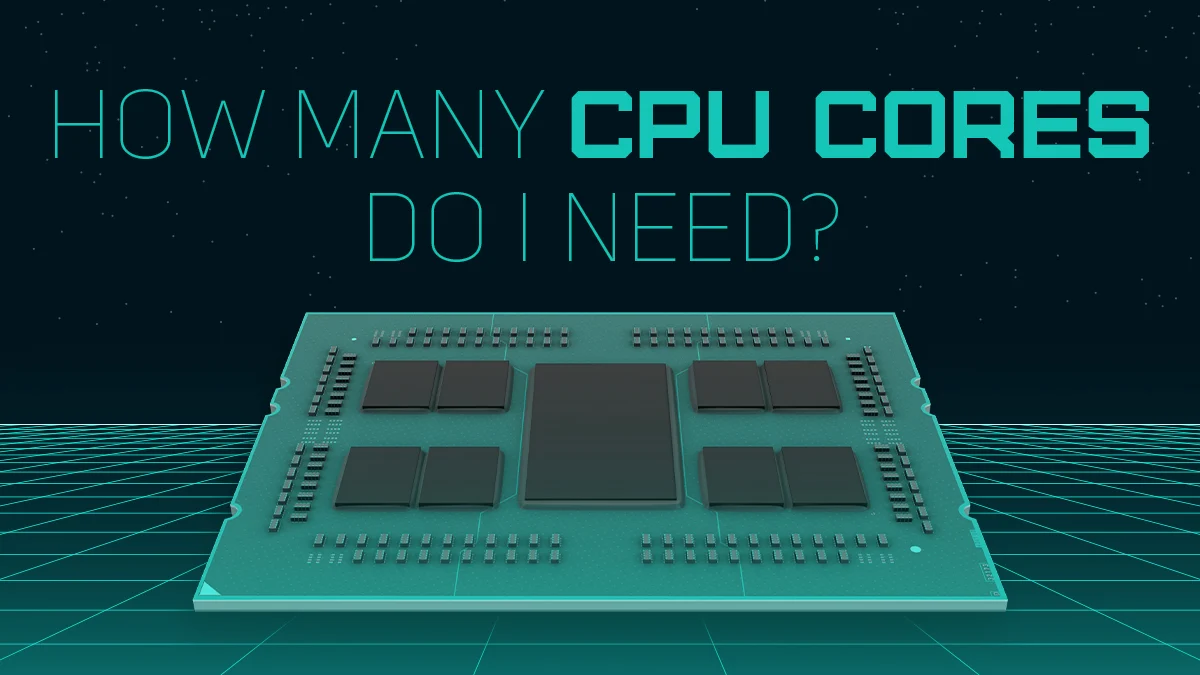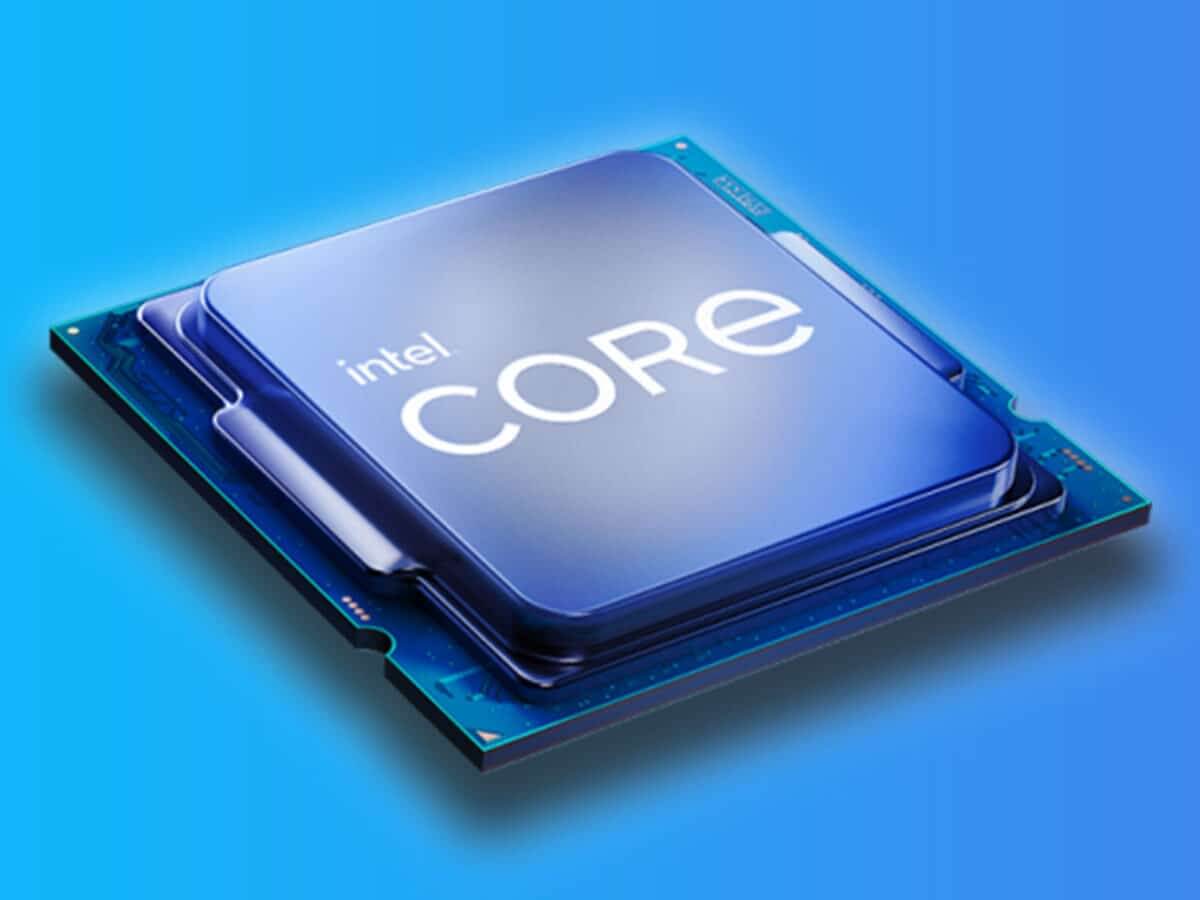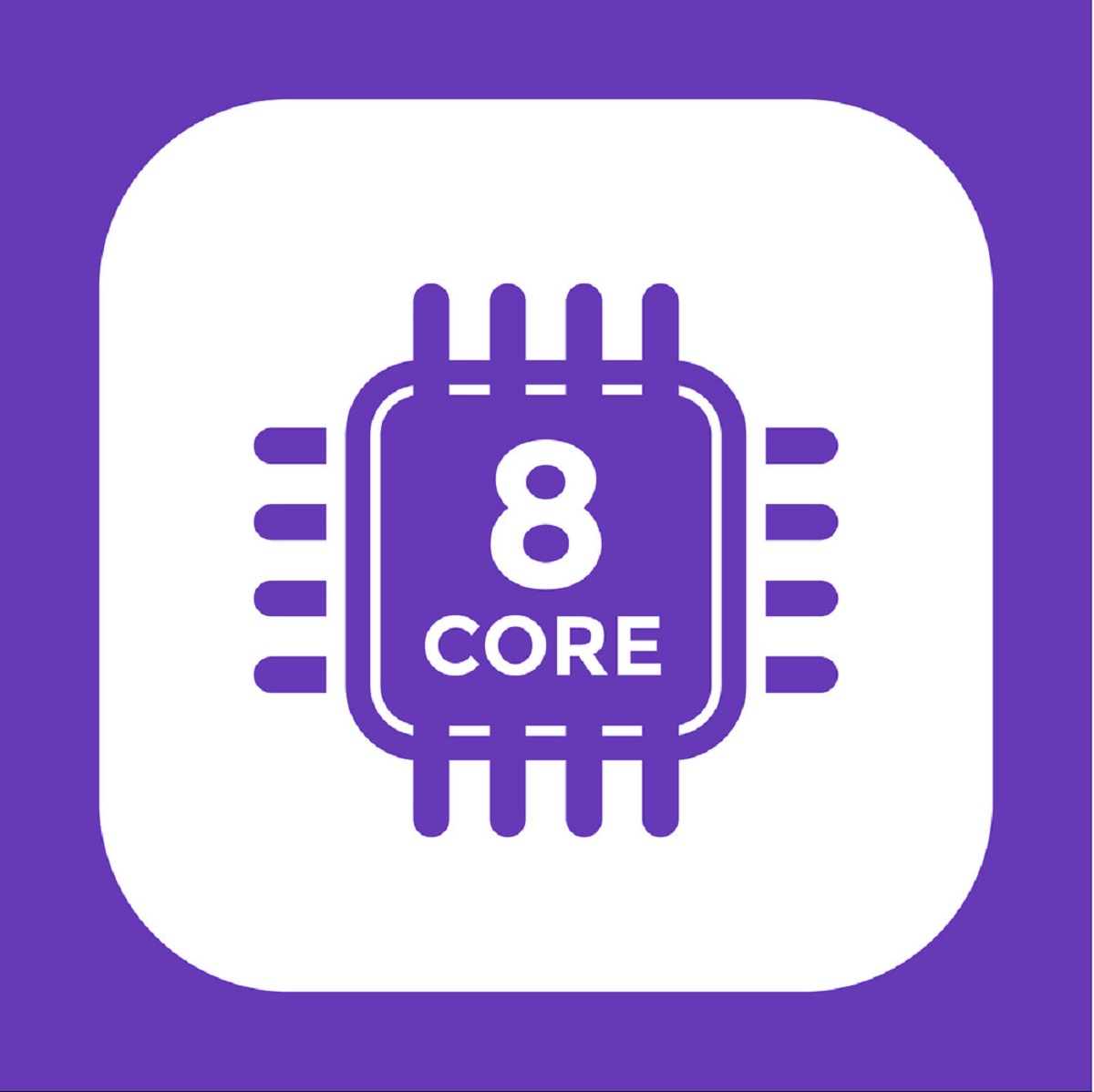Introduction
When it comes to choosing the right CPU for your computer or server, one of the key factors to consider is the number of cores. CPU cores play a crucial role in determining the performance and efficiency of your system. But with so many options available in the market, it can be overwhelming to understand how many CPU cores you truly need.
In this article, we will delve into the world of CPU cores and explore the factors you should consider when determining the number of cores required for your specific needs. Whether you are a gamer, a video editor, or a professional running resource-intensive applications, understanding the optimal number of cores for your workload is essential for maximizing performance.
Before we dive into the specifics, let’s take a moment to understand what CPU cores are and how they impact your system’s performance. CPU stands for Central Processing Unit, and it acts as the brain of your computer. It performs the calculations and executes instructions that allow your system to function.
A CPU core refers to an independent processing unit within the CPU. Each core can handle its own set of instructions simultaneously, allowing for parallel processing. Therefore, a higher number of cores generally translates into better multitasking capabilities and improved performance in tasks that can be divided into smaller parallel tasks.
However, it’s important to note that simply having more cores doesn’t always guarantee better performance. The number of cores you need depends on various factors, such as the type of tasks you regularly perform, the software you use, and your budget.
In the following sections, we will explore some key considerations for determining the ideal number of CPU cores for different use cases. We will also address common misconceptions and provide insights on how CPU cores impact performance and efficiency. By the end of this article, you will have a clearer understanding of how many CPU cores you need to optimize your computing experience.
Understanding CPU Cores
CPU cores are the individual processing units within a Central Processing Unit (CPU) that handle tasks and calculations. Each core is capable of executing instructions independently, allowing for parallel processing and multitasking. Having multiple cores enables your computer to handle multiple tasks simultaneously, improving overall performance and efficiency.
Imagine the CPU as a team of workers, and each core as an individual worker. With a single core, tasks are processed one at a time, similar to a single worker completing tasks in a sequential manner. As the number of cores increases, it’s like having more workers in the team, capable of tackling multiple tasks simultaneously.
For example, if you’re performing tasks such as multitasking, video editing, 3D rendering, or running virtual machines, having multiple CPU cores can significantly speed up your workflow. Each core can handle a separate task, allowing for smoother multitasking and faster completion of resource-intensive tasks. On the other hand, for simpler tasks such as web browsing or word processing, a single or dual-core CPU may be sufficient.
It’s important to note that not all CPU cores are created equal. Different processors may have different architectures, which can influence their performance. Processors with higher clock speeds and more advanced architectures can deliver better performance per core. Therefore, comparing processors solely based on the number of cores might not provide an accurate representation of their capabilities.
In addition to the number of cores, another factor to consider is hyper-threading. Hyper-threading is a technology that allows each CPU core to handle multiple threads simultaneously. This technology effectively doubles the number of threads that can be executed on each core, further enhancing multitasking capabilities. However, it’s important to note that hyper-threading doesn’t provide the same performance boost as physical cores do.
As technology progresses, CPU manufacturers continue to innovate and introduce processors with more cores. From quad-core processors to octa-core and beyond, the number of cores available in consumer-grade CPUs has grown significantly over the years. This allows for more powerful computing and improved multitasking capabilities.
Understanding the basics of CPU cores is essential for choosing the right processor for your needs. In the following sections, we will explore the factors that should be considered when determining the ideal number of CPU cores for different use cases. By understanding these factors, you will be able to make an informed decision and ensure that your system meets your specific requirements.
Factors to Consider When Determining the Number of CPU Cores Needed
Choosing the right number of CPU cores for your system involves assessing several important factors. By considering the following factors, you can determine the ideal number of CPU cores that will best suit your specific needs:
- Workload: The type of tasks you regularly perform is a crucial factor in determining the required number of CPU cores. Different workloads have varying levels of parallelism. For example, gaming, video editing, and 3D rendering can benefit from more cores as they involve computationally intensive operations. On the other hand, tasks like web browsing or word processing generally require fewer cores.
- Software Optimization: Some software applications are specifically designed to take advantage of multiple CPU cores. Before choosing the number of cores, check the system requirements of the software you plan to use regularly. This will give you an insight into whether the software can effectively utilize multiple cores or whether it is more optimized for single-core performance.
- Budget: The number of CPU cores available in a processor directly affects its cost. Processors with higher core counts tend to be more expensive. Therefore, it’s important to consider your budget and determine the right balance between performance and cost. Consider the tasks you will be performing and choose a CPU with an appropriate number of cores that fits within your budget.
- Future-Proofing: Technology is constantly evolving, and software applications are becoming increasingly optimized for multi-core processors. Considering future scalability is important, as choosing a processor with more cores than currently required can provide headroom for future software updates and advancements.
- System Requirements: It’s crucial to understand the system requirements of the operating system and software applications you plan to use. Some operating systems impose limitations on the number of CPU cores they can effectively utilize. Additionally, certain software applications may require a minimum number of cores for optimal performance or stability.
By carefully considering these factors, you’ll be able to determine the ideal number of CPU cores that will meet your specific needs. Keep in mind that striking a balance between performance, budget, and future-proofing is crucial in making an informed decision. In the next section, we will delve into the recommended number of CPU cores for different use cases to assist you further in selecting the right CPU for your requirements.
Ideal Number of CPU Cores for Different Use Cases
The optimal number of CPU cores needed can vary depending on the specific use case. Here, we will outline some common use cases and recommend the ideal number of CPU cores:
- Gaming: For gaming, the ideal number of CPU cores depends on the complexity of the game and the level of multitasking involved. Most modern games are optimized for quad-core processors, making them a popular choice for gamers. However, if you plan on streaming your gameplay, running background applications, or playing CPU-intensive games, a processor with six or more cores would be beneficial for smoother performance.
- Video Editing and Rendering: Video editing and rendering tasks can be demanding on the CPU. These tasks involve processing large amounts of data and performing multiple simultaneous operations. To handle these tasks efficiently, a processor with six or more cores is recommended. Additionally, if you work with high-resolution videos or use advanced video editing software, opting for a CPU with more cores can significantly improve rendering times.
- 3D Modeling and Animation: Similar to video editing, 3D modeling and animation software benefit from higher core counts. These tasks involve complex calculations and rendering processes. For smoother and faster workflow, a processor with eight or more cores would be ideal. This allows for efficient handling of rendering, simulations, and other CPU-intensive tasks within these applications.
- Virtualization and Server Applications: Virtualization and server applications often require high-performance CPUs with a sufficient number of cores to handle multiple virtual machines and client requests. Depending on the scale and complexity of your virtualization needs, a processor with at least eight cores would be recommended. However, for enterprise-level virtualization, processors with even higher core counts may be necessary.
- General Productivity and Web Browsing: For general productivity tasks like web browsing, word processing, and email, a processor with four cores should suffice. These tasks are not heavily CPU-dependent and can be easily handled by a quad-core processor. Opting for a higher core count might not provide noticeable improvements in performance for these types of tasks.
It’s important to note that these recommendations are not set in stone. The ideal number of CPU cores can vary based on individual preferences, specific software requirements, and budget constraints. It’s always a good idea to research the system requirements of the software you plan to use and consider the factors mentioned earlier when deciding on the number of CPU cores.
Now that you have a better understanding of the ideal number of CPU cores for different use cases, let’s address some common misconceptions about CPU cores in the next section.
Common Misconceptions About CPU Cores
When it comes to CPU cores, there are several common misconceptions that can affect our understanding of their importance and impact. Let’s address these misconceptions:
- More cores always mean better performance: While having more CPU cores generally improves multitasking capabilities and can enhance performance for parallel tasks, it doesn’t always translate to better overall performance. The clock speed, architecture, and optimization of a processor also play vital roles in determining its performance. In some cases, a processor with fewer high-performance cores can outperform a processor with more cores but lower clock speeds.
- Higher core counts are always necessary: Many users assume that they need CPUs with the highest possible core counts for their tasks. However, this is not always the case. For simpler tasks like web browsing or word processing, a quad-core CPU is generally sufficient. Investing in a processor with excessive core counts can lead to unnecessary expenses that may not provide noticeable performance improvements.
- Hyper-threading is equivalent to physical cores: Hyper-threading is a technology that allows each physical CPU core to handle multiple threads simultaneously. While it can enhance multitasking capabilities, hyper-threading doesn’t provide the same performance boost as physical cores. Threads executed on hyper-threading are not processed as efficiently as those on physical cores. Thus, physical cores still hold a significant advantage over hyper-threaded cores.
- All applications utilize multiple CPU cores: Not all software applications are designed to fully utilize multiple CPU cores. Some older applications or software that doesn’t require significant computational power might only be optimized for single-core performance. Therefore, having a high core count CPU for such applications may not provide substantial performance improvements.
- Adding more cores will always improve performance: Simply adding more CPU cores to an existing system does not guarantee a performance boost. The software you use must be optimized to take advantage of multiple cores. If your applications are not designed to utilize multiple cores efficiently, adding more cores might not lead to significant improvements. It’s essential to consider the software’s capabilities and requirements when deciding on the number of CPU cores.
By understanding these common misconceptions, you can make more informed decisions when selecting a CPU with the appropriate number of cores for your specific needs. In the next section, we will explore the impact of CPU cores on performance and efficiency to further enhance your understanding.
The Impact of CPU Cores on Performance and Efficiency
CPU cores have a significant impact on both the performance and efficiency of a computer system. Understanding this impact is crucial for choosing the right number of cores for your specific needs.
When it comes to performance, having multiple CPU cores allows for parallel processing, which can significantly improve the execution of tasks that can be divided into smaller subtasks. With more cores, your computer can handle multiple tasks simultaneously, resulting in faster task completion and overall improved system responsiveness.
For example, tasks such as video rendering, 3D modeling, and scientific computations often involve breaking down complex calculations into smaller chunks that can be processed simultaneously. Having a higher number of CPU cores enables these tasks to be completed more quickly and efficiently.
Efficiency is another vital aspect affected by the number of CPU cores. Efficient utilization of CPU resources is crucial for minimizing power consumption and heat generation. With a higher number of cores, the workload can be distributed more evenly, reducing the stress on individual cores and allowing each core to operate at lower utilization levels. This can lead to lower power consumption and improved overall system efficiency.
However, it’s important to note that the efficiency gains from adding more cores are not always linear. At a certain point, adding more cores may result in diminishing returns. This is because additional cores may not be fully utilized by all software applications, and the overhead of managing multiple cores can impact performance in some cases.
Furthermore, more cores can lead to increased power consumption and heat generation, especially when operating at high workloads. It’s crucial to strike a balance between performance and efficiency to ensure optimal system operation and avoid thermal issues.
It’s also worth mentioning that the performance and efficiency benefits of having more CPU cores may vary depending on the specific tasks and software being used. Some applications are better optimized to utilize multiple cores effectively, while others may only benefit from a few high-performance cores. Understanding the requirements of the software you use regularly is key to determining the ideal number of CPU cores for your needs.
In the next section, we will discuss how to determine the number of CPU cores required for your specific needs, taking into account the factors we have discussed so far.
How to Determine the Number of CPU Cores Required for Your Specific Needs
Determining the optimal number of CPU cores for your specific needs requires considering several factors and assessing your requirements. Here are some steps you can follow to help determine the ideal number of CPU cores:
- Identify your primary use case: Start by identifying the main tasks you perform on your computer or server. Consider whether you primarily use it for gaming, video editing, web browsing, virtualization, or other specific applications.
- Research system requirements: Look up the recommended system requirements for the software applications you use or plan on using frequently. Take note of whether they are optimized for single-core performance or can effectively utilize multiple CPU cores.
- Analyze workload complexity: Evaluate the complexity and parallelism of your typical tasks. Determine whether the tasks you perform can be divided into smaller subtasks that can be processed simultaneously. This will help gauge the potential benefits of having multiple CPU cores.
- Consider future scalability: Think about your future needs and whether your workload is likely to become more demanding over time. If you anticipate that your tasks will become more compute-intensive in the future, it might be beneficial to choose a processor with more cores to future-proof your system.
- Factor in budget and cost: Consider your budget and the cost implications of choosing a processor with a higher number of cores. Remember that additional cores come with a higher price tag, so strike a balance between your budget and the performance you require.
- Read reviews and benchmark comparisons: Research and read reviews and benchmark comparisons of CPUs that fit your requirements. Look for real-world performance tests that simulate the tasks you commonly perform. This will give you an idea of how different CPU models and core counts perform in practical scenarios.
- Consult with experts: If you’re still unsure about the ideal number of CPU cores for your specific needs, consider consulting with experts or seeking advice from professionals in the field. They can provide personalized recommendations based on their experience and knowledge.
By following these steps, you can make a more informed decision about the number of CPU cores required for your specific needs. Remember that there is no one-size-fits-all answer, as the optimal number of cores varies depending on individual requirements and use cases.
Lastly, keep in mind that technological advancements are continually evolving, and the ideal number of CPU cores may change over time. Regularly stay updated with the latest hardware developments and software requirements to ensure that you choose the most suitable CPU for your future needs.
Upgrading and Adding More CPU Cores
If you find that your current CPU is not meeting your performance needs, you have the option to upgrade or add more CPU cores to your system. Here are some considerations to keep in mind when upgrading your CPU:
- Compatibility: Check the compatibility of the new CPU with your current motherboard. Ensure that the socket type and chipset of your motherboard support the new CPU you want to upgrade to.
- Power and Thermal Considerations: Upgrading to a CPU with more cores may require a higher power supply or improved cooling solutions. Make sure your power supply can handle the increased power demands, and your cooling system can efficiently dissipate the heat generated by the additional cores.
- Budget: Consider your budget when upgrading your CPU. More cores generally come with higher price tags. Determine the maximum budget you are willing to allocate for the upgrade and choose a CPU with an appropriate number of cores that fits within your budget.
- Future Proofing: If you plan on upgrading your CPU for future needs, consider opting for a CPU with a higher number of cores than your current requirements. This will provide headroom for future software advancements and ensure that your system remains relevant for a longer period.
- Professional Installation: If you are not comfortable or experienced in handling CPU upgrades, it is recommended to seek professional assistance. Improper installation can lead to damage to components, so it’s best to have a trained technician handle the upgrade.
- Consider Other Components: When upgrading your CPU, it’s essential to ensure that the rest of your system components, such as memory and storage, are aligned with the CPU’s capabilities. For example, a powerful CPU may benefit from fast and ample RAM to maximize its performance potential.
- Software Optimization: After upgrading your CPU, ensure that your operating system and software applications are updated to take advantage of the increased core count. Some software applications may require specific settings or updates to fully utilize the additional CPU cores.
Adding more CPU cores to an existing system is not as straightforward as upgrading to a new CPU. It generally requires replacing the entire CPU or upgrading to a multi-socket motherboard that supports multiple CPUs. Therefore, it’s essential to consider the limitations of your current system and evaluate whether it can accommodate additional cores.
Prioritize your needs and resources to determine whether upgrading or adding more CPU cores is the right path for you. Evaluate the cost, benefits, and compatibility before making a final decision. Furthermore, consulting with experts or seeking professional advice can help you make an informed choice.
In the next section, we will conclude the article by summarizing the key points discussed throughout.
Conclusion
Understanding the optimal number of CPU cores for your specific needs is crucial for maximizing performance and efficiency. By considering factors such as workload, software optimization, budget, and future scalability, you can determine the ideal number of CPU cores required. Additionally, debunking common misconceptions about CPU cores and recognizing their impact on performance and efficiency helps in making informed decisions.
For different use cases, the ideal number of CPU cores varies. Gaming enthusiasts may benefit from quad or hexa-core CPUs, while professionals in fields like video editing and 3D modeling may require octa-core or higher CPUs. General productivity tasks like web browsing or word processing can be effectively handled by quad-core CPUs.
Upgrading or adding more CPU cores requires careful consideration of compatibility, power and thermal considerations, budget, and future-proofing. Seeking expert advice or professional installation can ensure a smooth upgrade process.
In the constantly evolving landscape of technology, it’s essential to keep in mind that the optimal number of CPU cores may change over time, as software becomes more optimized for multi-core processors. Staying updated with hardware advancements and software requirements helps ensure you make the best choices for your specific needs.
By following the steps outlined in this article, evaluating your workload, and considering your budget, you can confidently choose the right number of CPU cores to enhance your computing experience. Whether you’re a gamer, creative professional, or everyday user, finding the optimal balance between performance, budget, and scalability will lead to a more efficient and enjoyable computing environment.

























